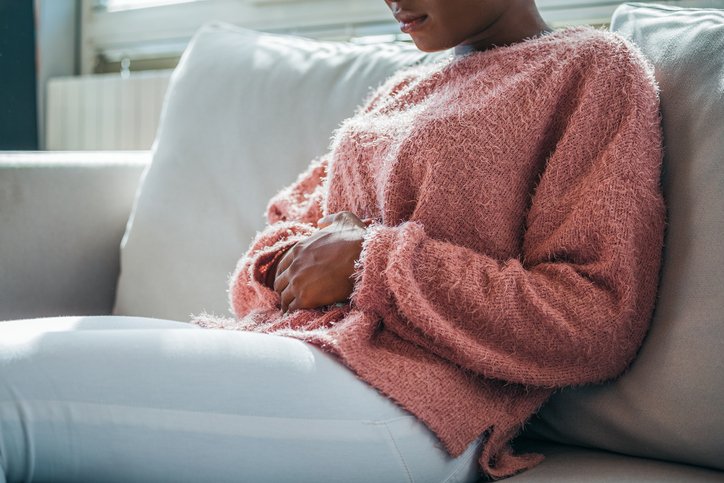Interstitial cystitis (IC) is a chronic condition that causes pain, pressure and/or discomfort in the bladder. Although IC is not caused by an infection, its symptoms can look like a bladder infection. To be considered IC, symptoms must persist for at least six weeks. Sometimes, when a person experiences bladder pain but there are no visible abnormalities in the organ, the condition is referred to as painful bladder syndrome (PBS). Together, IC and PBS are classified under the general term: bladder pain syndrome (BPS).
Who gets interstitial cystitis?
Both women and men can develop IC, but it occurs more often in women. Estimates vary, but some experts suggest that IC is two to three times more common in women than men, while others estimate that nine out of ten IC patients are women.
What are the symptoms?
Symptoms of IC vary from person to person. They can be mild to severe, persistent (always present) or intermittent (come and go), and may be aggravated by certain cycles, situations, or activities. For example, symptoms may worsen during periods of increased stress, during sexual activity, or when a woman is menstruating. Common IC symptoms include:
- Pain in the bladder
- Pelvic pain (sometimes felt in the urethra, lower abdomen and/or lower back)
- Pain between the vagina and the anus (for women) or between the scrotum and the anus (for men)
- Frequent need to urinate, day and night
- Urgency to urinate that may not go away even after simple urination
- Increased pressure or discomfort as the bladder fills
- Decreased bladder capacity
- Pain during intercourse
How can interstitial cystitis does it affect one’s sexual health?
Both men and women can have sexual problems due to IC. Women may feel pain during penetration as a result of the proximity of the cyst to the vagina. Men, on the other hand, may notice painful orgasms with IC or have soreness the next day.
What causes it?
At present, the cause of IC is unknown. Although not caused by a virus or bacterial infection, IC symptoms can worsen if a person also develops a urinary tract infection. A popular theory among experts is that a person with IC has a defect in the protective lining of their bladder that leaves the bladder wall vulnerable to irritants in the urine. Another possible cause of IC is a change in nerve activity in the area that causes painful sensations to be sent to the brain when a normally painless event (such as filling the bladder) occurs. Finally, some cases of IC are thought to be caused by an autoimmune response like that of rheumatoid arthritis, in which the body’s immune system attacks a part of the body (in this case, the bladder).
How do I know if I have interstitial cystitis?
If you experience any of the symptoms described above, schedule a visit with your healthcare provider. Through a physical exam and a thorough medical history, your provider can help you determine if your symptoms may be related to IC or if they may be due to another condition, such as a UTI or sexually transmitted infection (STD). Your healthcare professional will likely ask you about your pain (location, intensity, and duration), as well as frequency and urgency. He or she may need to collect a urine sample to check for infection or use a cystoscope, which is a tiny camera attached to a thin tube inserted into the urethra, to check for inflammation or ulcers inside your bladder. Finally, you may be asked to record the volume of fluids you drink and the amount of urine you produce in a bladder diary.
How is interstitial cystitis treated/managed?
Unfortunately, there is no simple cure for IC. However, people with IC can experiment with various strategies to manage their symptoms and reduce pain and discomfort. As with many health issues, it is generally advisable to start with the least invasive measures available to manage IC symptoms and gradually progress to more involved measures if necessary. Here are some methods that IC patients can use to manage their symptoms:
- Lifestyle changes: Some people find that their symptoms improve when they cut out or limit citrus fruits, tomatoes, chocolate, coffee, alcohol, caffeine, carbonated drinks, and spicy foods. Reducing stress, exercising, wearing loose-fitting clothes, and quitting smoking may also help reduce pain from IC symptoms.
- Medications: Over-the-counter and/or prescription medications, including anti-inflammatory medications, selected antidepressants, and antihistamines may help relieve pain and reduce urinary frequency/urgency.
- Bladder distention: Sometimes, people with IC find some relief after bladder distension, a procedure in which one’s bladder fills with fluid and stretches. If improvement is long-lasting, bladder distension may be repeated if symptoms return in the future.
- Surgery: Very few patients with IC undergo surgery, but it may be considered in severe cases in which the person with IC has not responded to any other form of treatment.
Resources:
International Urogynecological Society. (2021). Interstitial cystitis.
Mayo Clinic. (2019, September 14). Interstitial cystitis.
Foundation for Urological Care. (2021). What is Interstitial Cystitis (IC)/Bladder Pain Syndrome?
